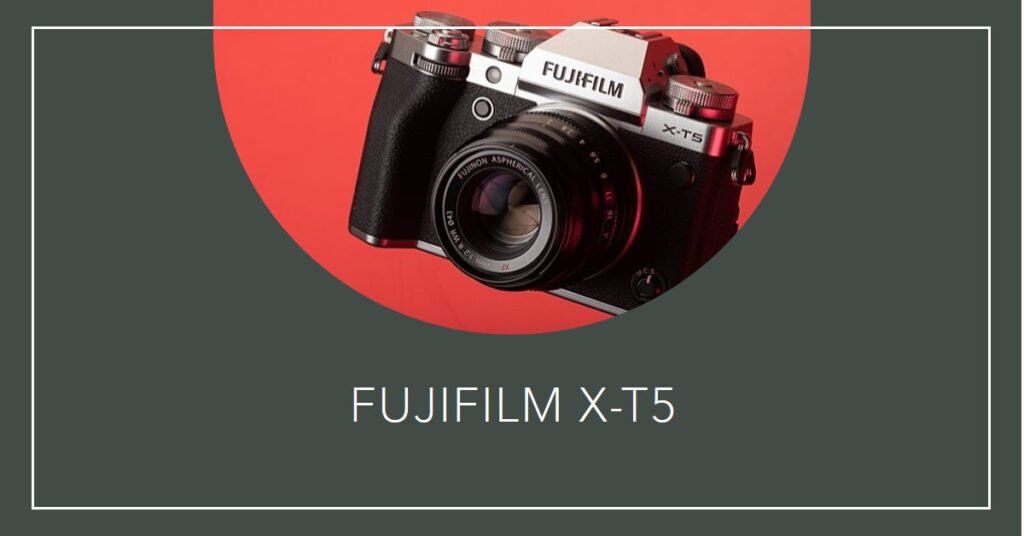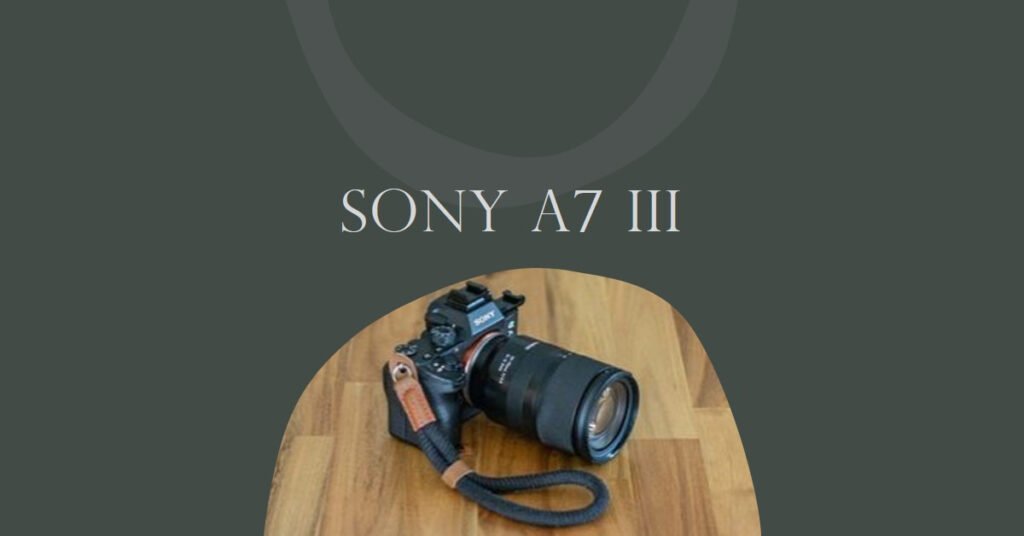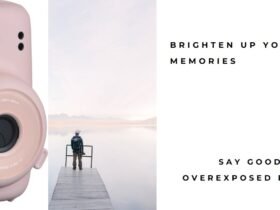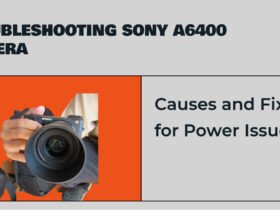The Nikon Z6 II, lauded for its enhanced speed, versatility, and performance, stands tall among contemporary all-rounder mirrorless cameras.
Known for its remarkable application in high-end photo and video production, it has firmly established itself as a multimedia powerhouse. With a 24.5MP FX-Format BSI CMOS Sensor, Dual EXPEED 6 processors, 273-Point Phase-Detect AF System, and other robust features, it delivers exceptional image quality and superior performance in various shooting conditions.
However, the vast world of photography gear offers numerous alternatives that could serve as suitable replacements or companions to the Z6 II, each with its unique strengths and specifications.
Whether you’re on the lookout for a camera with better specifications, more cost-effective options, or simply curious about what else the market has to offer, it is valuable to consider and evaluate other options.
Hence, this article brings to light the top five alternatives to the Nikon Z6 II, aimed to provide a comprehensive comparison and guide.
Whether it’s the image quality, low-light performance, video recording features, or body design you’re most concerned about, we’ll cover all these aspects in depth. So, buckle up and dive into this exploration of the top-notch cameras that could give the esteemed Nikon Z6 II a run for its money.
1. Canon EOS R8

The digital camera market has seen continuous improvements over the past few years, with top brands like Nikon and Canon regularly releasing cutting-edge products. With the release of the Canon EOS R8, comparisons with its predecessor and other market favorites like the Nikon Z6 II are inevitable. In this discussion, we will evaluate how the Canon EOS R8 serves as a good alternative for the Nikon Z6 II.
1. Sensor: Full frame or APSC
Both cameras feature full-frame sensors. The Nikon Z6 II has a 24.5-megapixel full-frame CMOS sensor while the Canon EOS R8 comes with an effective 24.2-megapixel full-frame CMOS sensor. Although Nikon Z6 II boasts a slightly higher resolution, the difference is marginal, and for most practical applications, the image quality offered by both cameras should be fairly comparable.
2. Autofocus
The Canon EOS R8 features an impressive 4897 autofocus points for photos and 4067 autofocus points for video. In comparison, Nikon Z6 II only offers 273 autofocus points. This significant difference makes the EOS R8 a more desirable choice for photographers who prioritize detailed and precise autofocus capabilities.
3. Speed
In terms of continuous shooting speed, the Canon EOS R8 has the upper hand with up to 40 fps for JPEG and Raw images. Nikon Z6 II, on the other hand, can only reach up to 14 fps. The faster speed of EOS R8 makes it a strong contender for wildlife and sports photography where capturing fast-moving subjects is essential.
4. Design: Dimension and Weight Comparison
When comparing the dimensions and weight, the Canon EOS R8 stands out as the more compact and lightweight choice. It weighs just 1 lb (with battery and recording media) and measures 5.22 x 3.39 x 2.76 inches. In contrast, the Nikon Z6 II weighs 1.4 lb and measures 5.3 x 4 x 2.7 inches. For photographers prioritizing portability and ease of handling, the EOS R8 is the better choice.
5. Viewfinder and LCD monitor
Both cameras feature an electronic viewfinder and LCD monitor. However, Nikon Z6 II offers a higher resolution viewfinder (3,690,000 dots) and LCD monitor (2,100,000 dots) compared to Canon EOS R8’s 2,360,000-dot viewfinder and 1,620,000-dot LCD monitor. However, the Canon EOS R8’s LCD monitor has an articulating design that might provide more flexibility in shooting from different angles.
6. Battery life
Although the manufacturers have not specified the exact battery life for each camera, it’s important to note that the battery types for both models differ. The Canon EOS R8 uses an LP-E17 rechargeable lithium polymer battery, while the Nikon Z6 II uses an EN-EL15c rechargeable lithium-ion battery. While the battery life can be influenced by many factors such as shooting conditions and settings, users typically report satisfactory performance from both models.
7. Video Capabilities
When it comes to video recording, both cameras offer impressive features. However, the Canon EOS R8 provides 4K UHD video recording at up to 59.94 fps, while the Nikon Z6 II can only reach up to 29.97 fps at 4K UHD. This gives the EOS R8 an advantage in creating smoother, higher-quality footage.
8. Lens Mount and Availability
Both cameras feature their brand’s respective lens mounts – the Canon RF for EOS R8 and Nikon Z for Z6 II. As for lens availability, both brands offer a wide range of lenses that cater to different shooting needs and budgets. The lens choices you have should depend on the type of photography you are into. Both Nikon and Canon have a rich history of lens manufacturing, hence you can expect high-quality optics from both.
9. Price
Price is always a significant factor when considering a camera. The Canon EOS R8, at a price of $1,500, is slightly cheaper than the Nikon Z6 II, which costs about $1,700. While both cameras provide exceptional value for their price, the EOS R8 offers similar, and in some cases better, features at a lower price, making it a more cost-effective alternative.
In conclusion, the Canon EOS R8 serves as a strong alternative to the Nikon Z6 II. With its advanced autofocus system, high-speed shooting capabilities, lightweight design, superior video recording features, and competitive pricing, the Canon EOS R8 establishes itself as a formidable competitor in the full-frame mirrorless camera market. While the Nikon Z6 II is an excellent camera in its own right, photographers looking for a more cost-effective option without sacrificing features should definitely consider the Canon EOS R8.
2. FUJIFILM X-T5

The constant evolution of the digital camera market has given consumers a plethora of choices. One such comparison is the Nikon Z6 II and the FUJIFILM X-T5. Here, we will explore the FUJIFILM X-T5 as a good alternative for Nikon Z6 II.
1. Sensor- Full frame or APSC
The Nikon Z6 II utilizes a full-frame sensor with an effective 24.5 Megapixels. Full-frame sensors are typically seen in professional-grade cameras, providing higher dynamic range and better low light performance. In contrast, the FUJIFILM X-T5 uses an APS-C sensor that gives a 40.2 Megapixel image, which can yield more detail in the final image despite the smaller sensor size. For those primarily concerned with resolution, the FUJIFILM X-T5 can be a solid alternative.
2. Autofocus
Autofocus is crucial for capturing clear, crisp images. The Nikon Z6 II comes with phase detection that supports 273 autofocus points. On the other hand, the FUJIFILM X-T5 ups the game with both contrast and phase detection, offering a whopping 425 autofocus points. The additional points can allow for more flexibility when composing shots.
3. Speed
When it comes to continuous shooting, both cameras have impressive speeds. The Nikon Z6 II can handle up to 14 fps, while the FUJIFILM X-T5 can reach 20 fps with an electronic shutter and 15 fps with a mechanical shutter. This speed difference can be beneficial for capturing action shots or fleeting moments.
4. Design- Dimension and Weight Comparison
The FUJIFILM X-T5, weighing 557g, is lighter than the Nikon Z6 II, which comes in at 615g. While the weight difference is not enormous, the slightly smaller and lighter design of the X-T5 could be a more comfortable choice for those who need to carry their camera for extended periods.
5. Viewfinder and LCD monitor
The Nikon Z6 II sports a 3.2″ tilting touchscreen LCD with a resolution of 2,100,000 dots. The built-in electronic viewfinder has a size of 0.5″ and a resolution of 3,690,000 dots. The coverage is 100% and magnification is approx. 0.8x. The viewfinder and LCD monitor offer sharp, vibrant, and detailed visuals that make it easy to compose and review your shots.
On the other hand, the FUJIFILM X-T5 has a slightly smaller 3″ tilting touchscreen LCD monitor but has a slightly lower resolution of 1,840,000 dots. The built-in OLED electronic viewfinder, similar in size (0.5″) and resolution (3,690,000 dots) as the Nikon Z6 II, provides 100% coverage and approx. 0.8x magnification. Despite the LCD resolution difference, the image quality on both the viewfinder and the LCD screen of the X-T5 is also exceptional, providing accurate colors and sharp details.
6. Battery life
Nikon Z6 II uses an EN-EL15c Rechargeable Lithium-Ion battery, while the FUJIFILM X-T5 uses a NP-W235 Rechargeable Lithium-Ion battery. The Nikon’s battery performance is not specified, while the FUJIFILM X-T5 is rated for approx. 580 shots. While actual battery life will vary based on your specific use, both cameras offer sufficient power for a good day’s shooting.
7. Video Capabilities
Both cameras are well equipped for video. The Nikon Z6 II can internally record UHD 4K (3840 x 2160) at up to 30fps and Full HD (1920 x 1080) at up to 100fps in H.264/MOV/MP4 format. For videographers needing higher quality, the Z6 II supports 4:2:2 10-Bit output via HDMI.
The FUJIFILM X-T5, on the other hand, impresses with higher video resolutions. It can internally record 4K videos (6240 x 3140) at up to 30fps and Full HD (1920 x 1080) at up to 240fps in H.264/H.265/MP4/MPEG-4 format. Like the Z6 II, the X-T5 also supports 4:2:2 10-Bit output via HDMI.
8. Lens Mount and Availability
The Nikon Z6 II uses the Nikon Z mount, while the FUJIFILM X-T5 uses the FUJIFILM X mount. Both mounts have a range of lenses available, with Nikon’s offering tending towards the high-end professional market, while FUJIFILM’s includes high-quality options that are often lighter and less expensive, making the X-T5 more versatile for a wider range of budgets.
9. Price
Both cameras are similarly priced. As of their specifications release, the Nikon Z6 II was priced at $1,700, while the FUJIFILM X-T5 was priced at $1,699. This means your choice can be guided by your specific needs rather than a significant price difference.
3. Sony a7 III

In the realm of full-frame mirrorless cameras, the Nikon Z6 II and Sony a7 III are both standout contenders. While the Z6 II has its own merits, many professionals and enthusiasts alike may find the Sony a7 III a compelling alternative for its array of features and performance. Here’s a deep dive into why the Sony a7 III can be a good alternative for the Nikon Z6 II.
1. Sensor: Full Frame or APSC
Both cameras employ full-frame sensors, delivering high-quality images with excellent dynamic range and low light performance. The Nikon Z6 II and Sony a7 III sport similar megapixel counts, 24.5 and 24.2 respectively. Therefore, both cameras offer comparable resolution for detailed and vibrant images.
2. Autofocus
The Sony a7 III is equipped with 693 phase detection points and 425 contrast detection points, which cover approximately 93% of the image area. This surpasses the Nikon Z6 II’s 273 phase-detection points, providing more flexibility and precision when composing shots. The Sony’s advanced Eye Autofocus is also renowned for its accuracy and reliability, especially useful for portrait photography.
3. Speed
While the Nikon Z6 II offers a higher burst rate of 14 frames per second (fps), compared to the Sony a7 III’s 10 fps, the difference may not be critical for all users. Unless you frequently shoot fast-moving subjects like sports or wildlife, both speeds should adequately capture most situations.
4. Design- Dimension and Weight Comparison
The Sony a7 III, at 126.9 x 95.6 x 73.7 mm, is slightly smaller than the Nikon Z6 II, which measures 134 x 100.5 x 69.5 mm. Although there isn’t a considerable difference, some users might prefer the compactness of the a7 III. When it comes to weight, Sony’s model tips the scale at 650 g, while Nikon’s weighs in at 615 g. This slight difference might not be noticeable in day-to-day use, but it can make a difference during long shooting sessions, making the Nikon Z6 II slightly more comfortable to use.
5. Viewfinder and LCD Monitor
Both cameras feature a built-in electronic viewfinder, yet they differ in terms of resolution. The Nikon Z6 II comes with a 3,690,000-dot viewfinder, outdoing Sony’s 2,359,000-dot counterpart. This difference could translate into a better visual experience when composing and previewing images on the Nikon camera. However, both feature a tilting touchscreen LCD, providing users with versatility while shooting at different angles.
6. Battery Life
Battery life is a critical consideration for any photographer, especially for those who often shoot for extended periods. The Sony a7 III utilizes the NP-FZ100 battery, capable of taking approximately 710 shots per charge. The Nikon Z6 II uses the EN-EL15c battery, but Nikon does not specify the number of shots per charge. From users’ feedback, Sony’s battery life seems to be more reliable for longer shoots, making the Sony a7 III a superior choice in this regard.
7. Video Capabilities
Both cameras offer internal 4K video recording, with the Nikon Z6 II providing up to 30 fps and Sony a7 III allowing for up to 24 fps. However, Sony’s camera has the advantage in video compression, offering XAVC S format for higher quality and more manageable file sizes. Also, the a7 III offers HDR and HLG (Hybrid Log-Gamma), and S-Log profiles for increased dynamic range and better color grading in post-production. Therefore, if you’re heavily into videography, Sony a7 III may serve as a better alternative.
8. Lens Mount and Availability
In terms of lens mount, Nikon Z6 II features the new Nikon Z mount, while Sony a7 III utilizes the Sony E mount. Both mounts have a decent range of native lenses available. However, the Sony E mount benefits from an older and more extensive lineup of lenses from Sony and third-party manufacturers, providing a7 III users with a wider range of choices for various photography styles and requirements.
9. Price
At the time of writing, both cameras are priced at $1,700. Considering the features, performance, and lens ecosystem, each offers good value for the price. Your choice will hinge on which camera’s strengths align more closely with your specific photography needs and style.
4. Canon EOS R7

Choosing the right camera can be a daunting task with various options available in the market. Today, we’ll be examining the Canon EOS R7 as a good alternative for the Nikon Z6 II. These two cameras, despite their differences, are positioned similarly in the market, offering versatile capabilities for hobbyists and professionals alike.
1. Sensor – Full Frame or APS-C
The Nikon Z6 II features a 24.5 Megapixel Full-Frame CMOS sensor while the Canon EOS R7 comes with a 32.5 Megapixel APS-C CMOS sensor. Although both sensors offer impressive image quality, the EOS R7 provides a higher resolution, which might prove advantageous for photographers desiring more detailed images. However, Nikon Z6 II’s full-frame sensor often implies better low-light performance and a broader dynamic range.
2. Autofocus
Autofocus is a critical component of any camera. The Nikon Z6 II comes with 273 phase-detection points, while the Canon EOS R7 boasts 651 autofocus points, providing the R7 with more extensive coverage and potentially faster and more accurate focusing. Also, Canon’s renowned Dual Pixel AF system assures reliable subject tracking and focusing performance.
3. Speed
In terms of speed, the Canon EOS R7 provides faster continuous shooting speeds – up to 30 fps with its electronic shutter, compared to the Nikon Z6 II’s 14 fps. This increased speed might make the R7 a better choice for wildlife or sports photography, where capturing fast-moving subjects is essential.
4. Design – Dimension and Weight Comparison
The EOS R7, measuring 132 x 90.4 x 91.7 mm and weighing 530 g, is slightly smaller and lighter than the Nikon Z6 II, which measures 134 x 100.5 x 69.5 mm and weighs 615 g. This makes the EOS R7 a more portable option, particularly for photographers who often carry their gear for extended periods.
5. Viewfinder and LCD monitor
Both cameras feature an electronic viewfinder, with the Nikon Z6 II offering a higher resolution at 3,690,000-dot compared to Canon’s 2,360,000-dot viewfinder. This difference might lead to a more detailed image preview in the Z6 II. The LCD monitors of both cameras are similar in terms of functionality, with both offering a tilting touchscreen for convenience in shooting from various angles.
6. Battery life
Canon EOS R7 uses the LP-E6NH battery, whereas Nikon Z6 II uses the EN-EL15c battery. While Nikon does not specify the number of shots per charge, the general consensus among users is that both cameras offer satisfactory battery life for typical usage. Exact battery performance will depend on shooting conditions and settings.
7. Video Capabilities
The EOS R7 impresses in the video department, providing internal UHD 4K recording up to 60fps in H.265 10-bit, while Nikon Z6 II only supports up to 30fps in H.264 8-bit internally. Additionally, the EOS R7 offers Canon Log 3 for greater dynamic range, making it an appealing choice for videographers needing more extensive post-production flexibility.
8. Lens Mount and Availability
The EOS R7 uses Canon’s RF mount, which is relatively new but rapidly expanding with high-quality lenses. Nikon Z6 II uses Nikon’s Z mount, also relatively new and growing. The availability of lenses will primarily depend on your photographic requirements, although both manufacturers are committed to expanding their lens ranges.
9. Price
Price-wise, the Canon EOS R7 is less expensive at $1,400 compared to the Nikon Z6 II’s $1,700 price tag. Considering its capabilities, the EOS R7 offers a substantial amount of value, potentially giving more bang for your buck.
In conclusion, while the Nikon Z6 II and Canon EOS R7 are both top-tier cameras that cater to a variety of shooting conditions and styles, the Canon EOS R7 provides some compelling advantages, including a higher resolution sensor, superior autofocus points, faster continuous shooting, and more advanced video capabilities. Moreover, the smaller, lighter design and a lower price tag further enhance the appeal of the EOS R7.
5. Canon EOS R10

In the fiercely competitive world of digital photography, picking the right camera can make all the difference. As you evaluate your options, one pairing worth considering is the Nikon Z6 II versus the Canon EOS R10. With their high-performance features, these two are leading contenders in the market. However, given the differences in specifications and performance, the Canon EOS R10 emerges as a compelling alternative to the Nikon Z6 II, offering similar capabilities at a more affordable price point. Here, we will look into why the Canon EOS R10 stands out as a good alternative.
1. Sensor- Full frame or APSC
The Nikon Z6 II boasts a 24.5 Megapixel Full-Frame CMOS sensor, which is known for its superior low-light performance and wider dynamic range. However, the Canon EOS R10, with its 24.2 Megapixel APS-C CMOS sensor, offers similar resolution with a 1.6x crop factor. The smaller sensor size may mean a little less dynamic range, but it also allows the EOS R10 to be more compact and lightweight, making it a more portable choice for travel photography.
2. Autofocus
The Nikon Z6 II comes with 273 phase-detection autofocus points, which offer solid performance for both photography and videography. However, the Canon EOS R10 pulls ahead significantly with a whopping 651 phase-detection autofocus points, providing more accurate and faster autofocus performance. This could make a significant difference in shooting moving subjects, making it a better choice for sports or wildlife photography.
3. Speed
The Nikon Z6 II offers continuous shooting at up to 14 fps for up to 124 frames, which is impressive. However, the Canon EOS R10 again pulls ahead with its higher speed capabilities. Depending on the shutter type, the EOS R10 can deliver up to 23 fps for up to 70 frames (JPEG) or 21 frames (Raw) with its electronic shutter, and up to 15 fps for up to 460 frames (JPEG) or 29 frames (Raw) with its mechanical shutter. This high-speed shooting capacity enhances the chances of capturing the perfect shot in fast-action scenarios.
4. Design- Dimension and Weight Comparison
The Nikon Z6 II measures 5.3 x 4 x 2.7″ and weighs 1.4 lb, while the Canon EOS R10 comes in at a more compact 4.8 x 3.5 x 3.3″ and a lighter 13.5 oz. The more compact and lighter design of the EOS R10 makes it more portable and easier to handle during extended shooting sessions.
5. Viewfinder and LCD monitor
Both cameras have an electronic viewfinder and a tilting touchscreen LCD, but the Nikon Z6 II has a higher-resolution viewfinder at 3,690,000 dots compared to the 2,360,000 dots of the Canon EOS R10. However, the EOS R10’s LCD monitor is free-angle, which offers more flexibility when composing shots from different angles.
6. Battery life
Battery life may vary depending on usage, but generally, both cameras offer decent performance in this aspect. While the Nikon Z6 II uses an EN-EL15c Rechargeable Lithium-Ion battery, the Canon EOS R10 relies on an LP-E17 Rechargeable Lithium-Ion battery.
7. Video Capabilities
In terms of video capabilities, both cameras can record UHD 4K video, but the Canon EOS R10 supports recording at higher frame rates of up to 59.94 fps in 4K resolution. It also offers both 4:2:0 8-bit and 4:2:2 10-bit internal recording, making it more flexible for professional video applications. Additionally, the EOS R10 offers IP streaming and a digital image stabilization feature for video, further adding to its appeal for videographers.
8. Lens Mount and Availability
The Nikon Z6 II utilizes Nikon’s Z mount, while the Canon EOS R10 uses Canon’s RF mount. While both companies have a wide range of lenses, Canon’s RF mount also allows the use of EF and EF-S lenses with an adapter, expanding the range of compatible lenses. Thus, for users with an existing collection of Canon EF or EF-S lenses, the EOS R10 provides a seamless transition.
9. Price
Price is a significant consideration when purchasing a camera. The Nikon Z6 II retails for about $1,700, while the Canon EOS R10 is priced at a more affordable $1,300. Given the similar features and performance of these two cameras, the lower price point of the EOS R10 makes it a more attractive option for budget-conscious photographers or those just entering the world of professional photography.
As we wrap up, it’s clear that while the Nikon Z6 II stands tall in the world of mirrorless cameras, there are plenty of formidable contenders in the market. Therefore, if you’re looking to explore options beyond the Z6 II, these top 5 alternatives are worth your attention.
- Also Read: 3 Cheapest 10-Bit Cameras You Can Buy
- Also Read: Top 7 Best Cinematography Courses In Germany
- Also Read: Top 5 Nikon Z7 II Alternatives












Got a Question?
Find us on Socials or Contact us and we’ll get back to you as soon as possible.